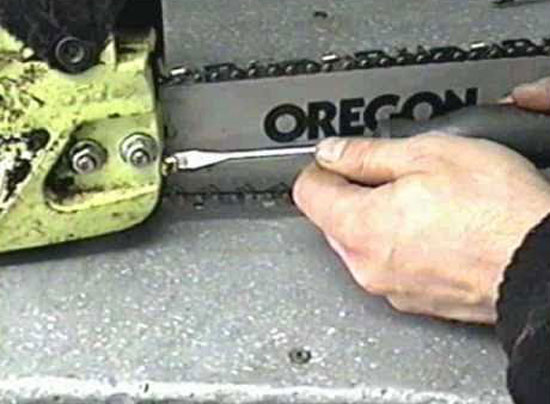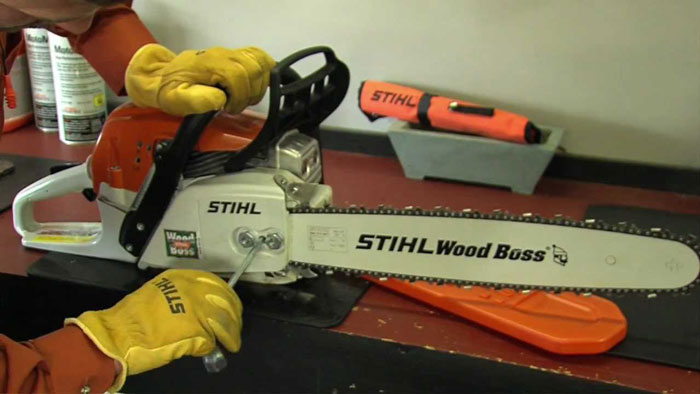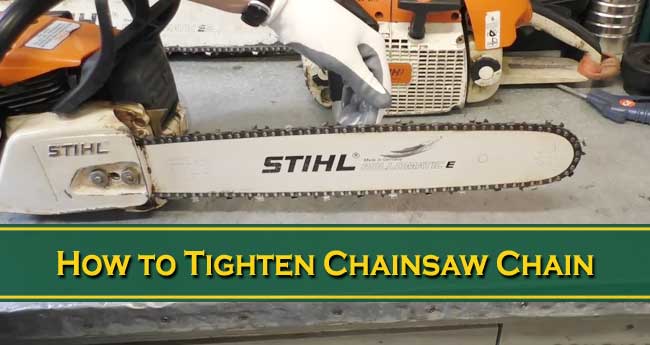One of the most general, yet important, rule of using a chainsaw is to check the tension in the chain before turning the chainsaw on. As the chainsaw mainly relies on heavy, jerking motions to operate, the chain can often sag or come loose.
Why Do I Need to Tighten the Chain?
Once the chain sags, it can throw several obstacles your way. Firstly, having the chain rattle around during operation is a big no-no. It can come flying towards you and injure you in the process. Moreover, the cuts will not be as crisp with a loose chain, and it may cut in places you do not wish for, owing to the constant movement.

If the chain is too tight, more engine power will drain out with every use due to the increased friction between the bar and chain. This can have a terrible impact on the lifespan of your chainsaw. Worst case scenario, the chain might break mid-operation and leave you terrible injuries.
Regardless of whether you have an electric chainsaw or a gas-fueled one, knowing how to tighten the chain is an essential skill to have. It can save you a lot of time, effort, and money as opposed to having the component tightened by a professional each time.
Tools
No additional tools are required to tighten the chain. However, it helps to familiarize yourself with the components that come into play during the process. Firstly, identify the tension screw. It is placed near the base of the bar where it goes into the casing.

Your chainsaw may also come with a screw or wrench that fits the tension screw perfectly. Using the tool provided will make the process a lot easier. Several popular brands, such as Husqvarna, sell the ‘scrench’ as a spare part. The scrench is worth checking out along with Husqvarna chainsaw reviews.
Additionally, locate the clutch cover nuts that hold the bar in place.
Tightening Process
Before you begin tightening the chain, ensure that the tool is completely cooled down. Never tighten the chain while it is still hot. Additionally, pull the spark plug to avoid having the chainsaw switch on by accident. As an added safety measure, put on a pair of gloves to avoid cuts and other minor injuries.
The first task is to unscrew the bolts on the casing, so the sides come slightly apart. Doing this will give you the space to reach into the casing and manipulate the tension adjustment screw. Set the chainsaw on a stable surface before moving on to the next step.
The next step is as straightforward as it gets. If you tighten the tension adjustment screw, the chain will become tighter. As you loosen the screw, the chain will become slacker. Remember to hold the nose of the bar upwards as you tighten the screw. Believe it or not, this is all it takes to adjust the tension in your chainsaw chain.

Once you are done adjusting the tension, hold the nose of the bar up and close the casing back up as well as tighten the clutch cover nuts.
Too Tight or Just Right?
Did I tighten it far too much or too little? Yes, that is a possibility but it is an easy fix! To check whether the tension is off, first examine the gap between the chain and the bar at the bottom of the bar. A gap indicates the chain being too slack still. Ideally, the drive links would be inside the groove.
If there is no gap, check for excess tightening using the snap test. Then, try to lift the chain. A correctly tensed chain will be easy to lift. However, the drive links should not come out of the groove. If the chain does not budge at all, it’s been screwed too tight.
Final Words
Maintaining a chainsaw and improving its lifespan truly is not as difficult as it looks. All it takes is a set of small skills that come together to make your life much easier.
You can purchase the best chainsaw sharpener to fit your needs, and as well as the best bar and chain oil. However, without the skills required for the correct maintenance, the potency of either of those purchases will remain unmet. Having the perfect blend of skills and equipment will keep your chainsaw problem-free for years on end!

